 |
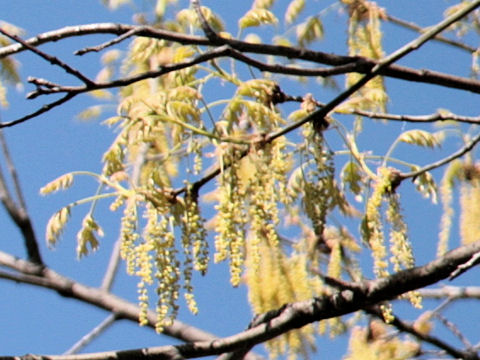

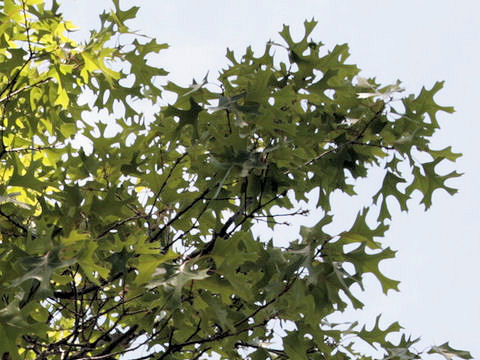

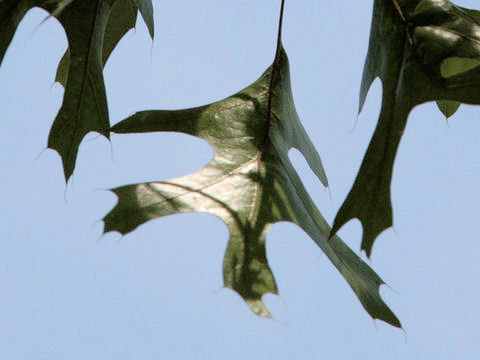

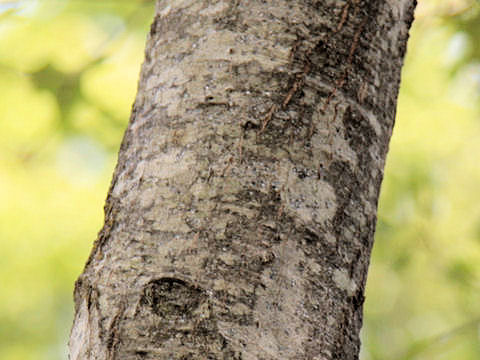

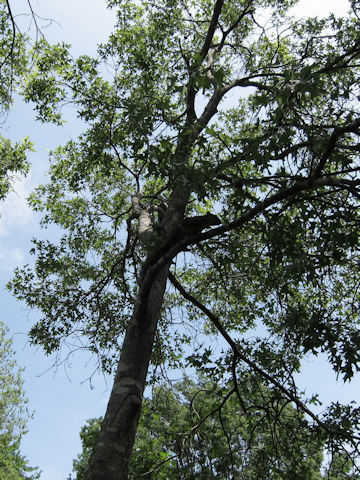

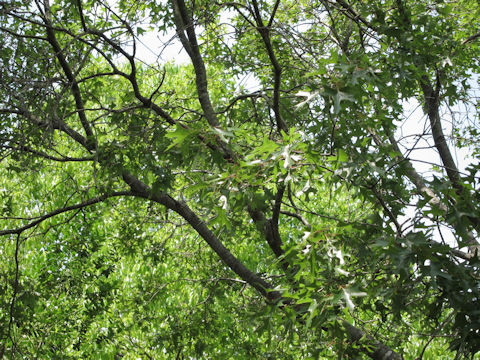

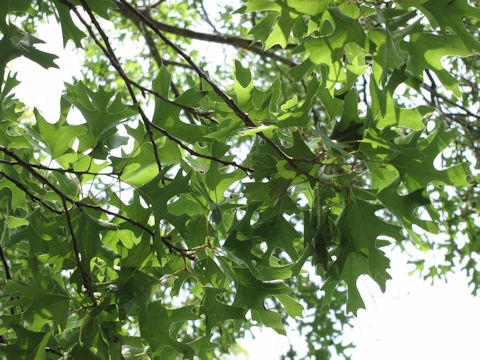

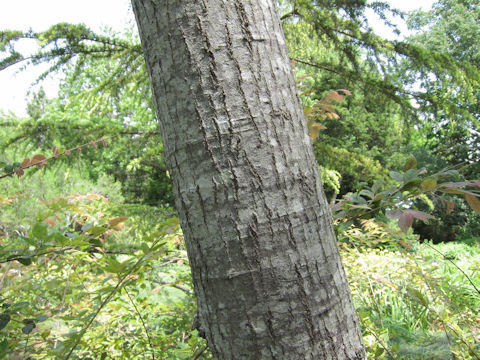

|

|
アメリカの中南部、イリノイ・ケンタッキー州からテキサス・アラバマ州にかけて分布しています。石灰岩地または砂質の土壌に生え、高さは9〜22メートルになります。「シュマードオーク(Shumard oak)」の近縁です。樹皮は灰褐色で、浅く割れ目が入ります。葉は不規則に4〜7裂し互生します。春に、長い雄花序と葉腋から短い雌花序を出します。果実は長さ2.5センチほどの堅果で、2年目の秋に熟します。
|

|
ブナ科コナラ属の落葉小高木で、学名は Quercus texana。英名は Texas red oak、Nuttall oak、Spanish oak。
|

|
The Texas red oak (Quercus texana) belongs to Fagaceae (the Beech family). It is a semi-tall deciduous tree that is distributed from Illinois, Kentucky to Texas and Alabama in the central-southern United States. This tree grows on limestone or sandy soils and can reach 9-22 m in height. It is a related species of Shumard oak. Barks are grayish-brown and shallow fissuered. Leaves are irregularly divided into 4-7 lobes and alternate. Short female inflorescences and drooping male inflorescences are born in axiles in springtime. Fruits are nuts about 2.5 cm long, mature in next year's fall.
|

|
[上] アメリカ・テキサス州ダラス市「ダラス植物園」にて、2007年03月10日撮影。(photo by Jon Suehiro)
[中1〜中3] 同上にて、2006年04月14日撮影。
(photo by Jon Suehiro)
[中4〜6・下] 同上にて、2010年05月01日撮影。(photo by Jon Suehiro)
|









